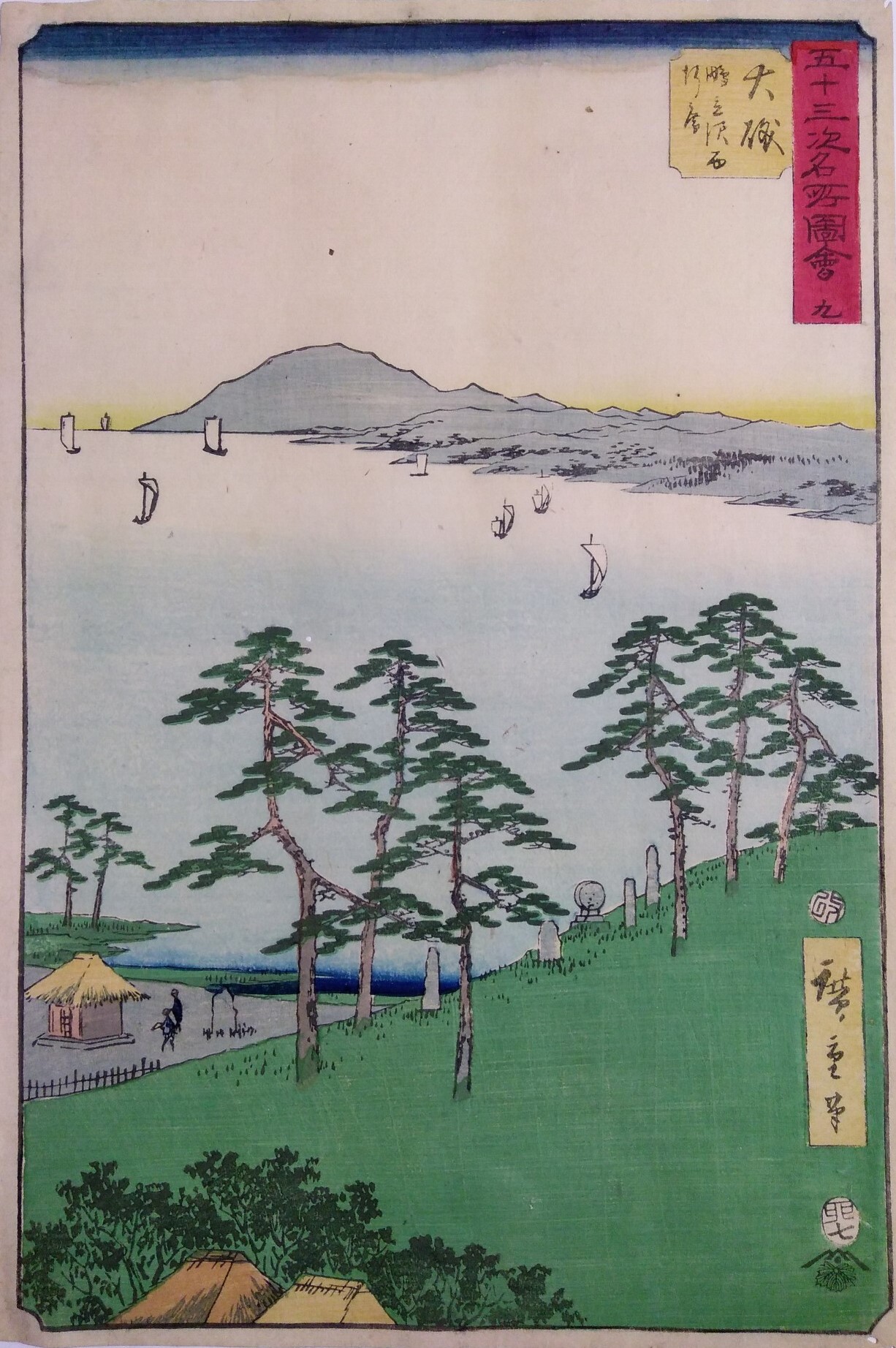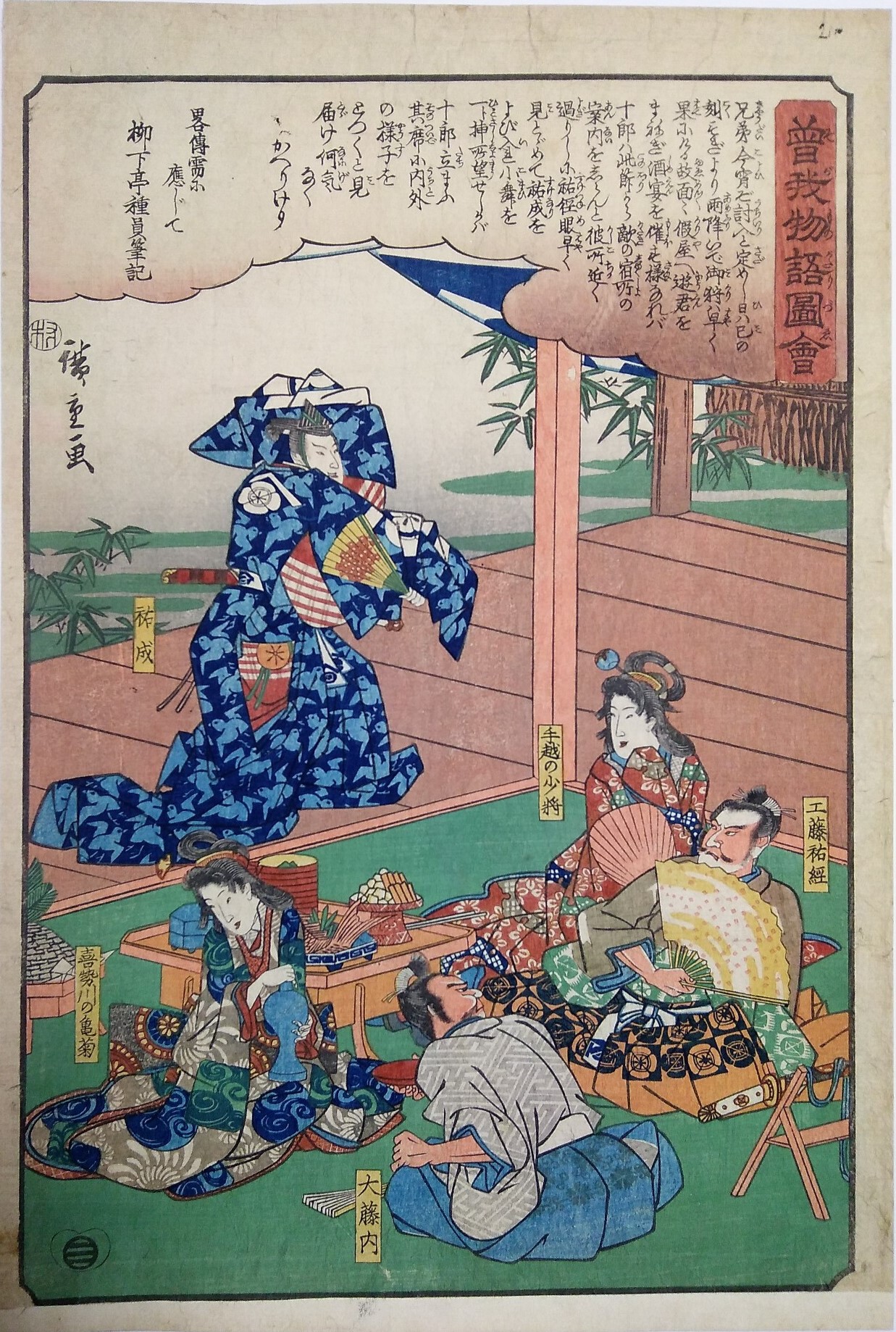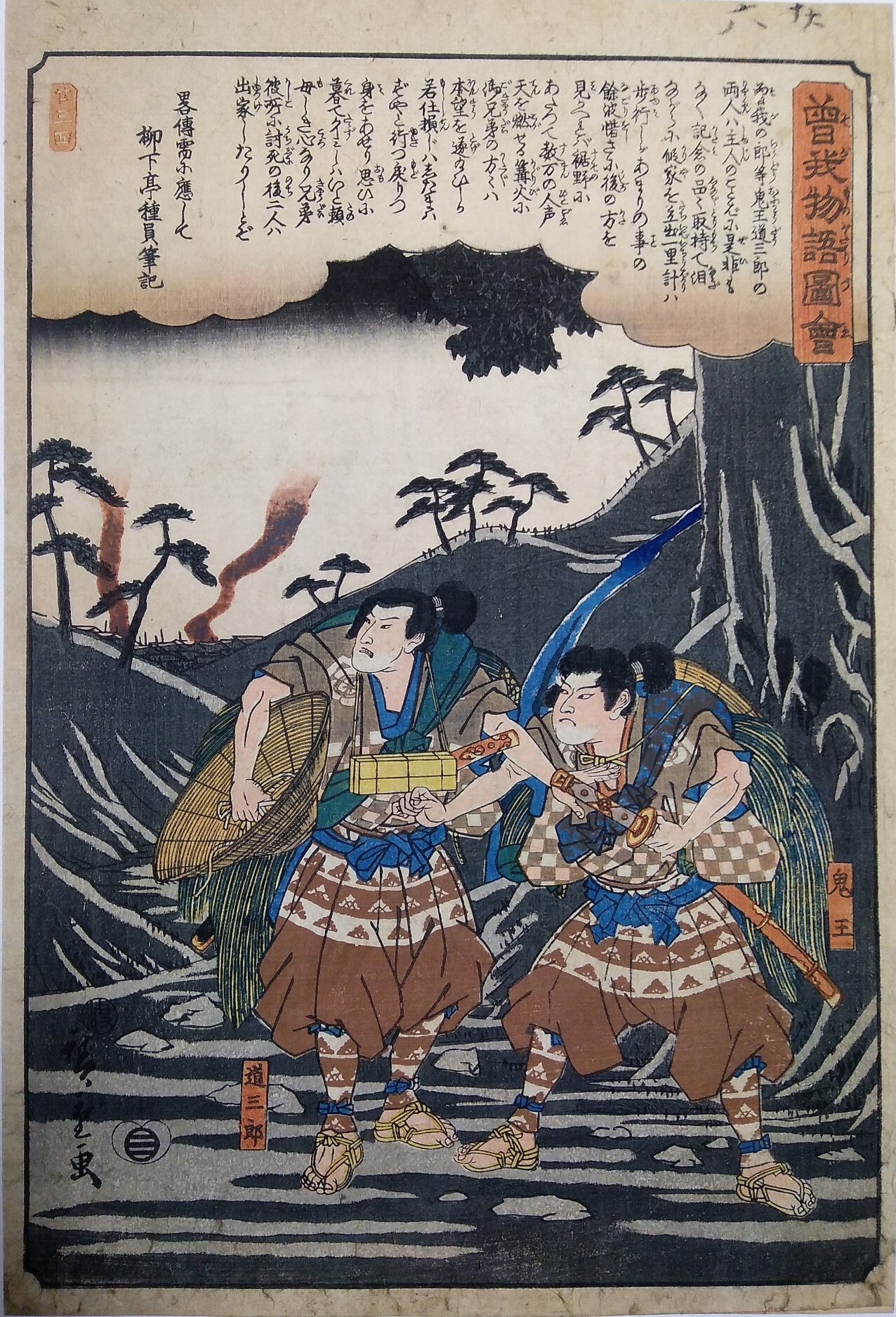Utagawa Hiroshige
1797 ~ 1858Hiroshige Utagawa, born in Edo (modern-day Tōkyō as Andō Jūemon to a lower-ranking samurai family, is considered one of the greatest and most influential ukiyo-e artists in Japanese history.
Initially exposed to art by a fellow firefighter who introduced him to the Kano school of painting, Hiroshige was rejected by Utagawa Toyokuni`s studio but was later accepted by Toyohiro Utagawa in 1811. Under Toyohiro`s tutelage,
he adopted his art name and learned traditional painting techniques.
After leaving the fire brigade to focus entirely on art, Hiroshige made a significant impact on the art scene with his series "The Fifty-three Stations of the Tōkaidō" in 1832, depicting the journey along the road connecting Edo to Kyoto.
This work highlighted both the beauty of the Japanese landscape and the everyday lives of its citizens, becoming one of his most celebrated successes.
During the period from 1831 to 1843, Hiroshige produced numerous acclaimed series such as "The Sixty-nine Stations of the Kisokaido", "Famous Views of the Sixty-odd Provinces" and "Thirty-six Views of Mount Fuji", culminating with "One Hundred Famous Views of Edo".
In addition to landscapes, Hiroshige also created kacho-ga (bird and flower pictures), bijin-ga (pictures of beautiful women), and yakusha-e (actor prints).
Hiroshige`s art was highly prized for its innovative use of perspective and color gradation techniques, which brought natural elements like the sky and water to life with a sophistication that captivated collectors and artists in the West. His influence extended to European
impressionists and post-impressionists, such as Toulouse-Lautrec and Van Gogh, who literally copied two of his prints.
Hiroshige died in 1858 during the Edo cholera epidemic, leaving a lasting legacy in the art world. His works continue to be celebrated for their ability to capture the essence of Edo-period Japan and for their profound cultural impact both in Japan and internationally.
 Not for Sale
Not for Sale
Ōiso is a town of the Kanagawa prefecture facing the Sagami bay.
In the ancient time, before the Taika reform of 645 a.d it was part of the domain controlled by the Shinagano clan.
With the introduction of the Ritsuryō reform when the Shinano clan domain was unified with the Sagamu`s one, Ōiso became part of the Yurugi district of the newly born Sagami country.
At the northeastern side of Yurugi`s boundaries broaden Ōsumi lived a community of people came from Goguryeo (Kōkuryō) one of the three kingdoms existing in the Korean peninsula by that time.
During the Nara period and Heian period a timespan which spread from 710 a.d to 1185 a.d it was the place where provincial office was established by imperial court of Kyōtō.
Thanks to the mild temperature and warm climate of the area attention towards Ōiso has been growing up in recent times as tourist and visitor more often spend time to one of its health resorts or swimming area.

This print belongs to a collection ispired by the Tale of the Sōga, an epic war tale (gunki monogatari) which tells the story of the Sōga brothers, Sukenari and Tokimune, and their attempt to
killing Kudō Suketsune as an act of revenge for having murdered their biological father years before.
The matter happens during a sumptuos hunting event, the "Fuji no Makigari" organized by the Shōgun Minamoto no Yoritomo in 1193.
Suketsune (holding a wide yellow fan in the print) is relaxing with few guests, sitting and enjoying a meal. The older of the Sōga brother Sukenari is performing a dance for them, aiming to pleasure and entertain
Suketsune before the attack.
The other guests are (from the right): Tegoshi Shōshō: a courtesan from Tegoshiyado in Suruga, modern Shizuoka. She was Suketsune`s lover. Ōtonai: aka Ōmori Takamori, a Shintoist priest from the Kibitsuiko Shrine
Kibitsuiko jinja. Kisegawa no Kamegiku: a famous shirabyōshi dancer of the time.
USD$ 194.00

Also known by the name of Oniōmaru and Tanzaburō they enter the scene from the second half of the story, helping the Sōga brothers in their quest for revenge.
Despite costing them their own life the Sōga brothers eventually succeded in avenging their father`s death.
After few debates over their real existence, Oniō and Dōzaburo (even if probably under different but similar names) have been acknowledged as real and are now remembered for having
brought back the brothers memento to their mother and spread their memory across the nation.
USD$ 157.00

